From water dragon gods to possessed origami, the rich folklore of Japan is packed full of ominous beings. In addition to differing in appearance, their stories vary from heartwarming to frightening. And by learning about them, you’ll be better able to appreciate Japanese art and culture.
Below are ten supernatural and mythical animals, creatures, and beasts from Japanese culture:
- Kappa
- Tengu
- Ryū (Dragon)
- Nurikabe
- Onryo
- Bake-danuki (Tanuki)
- Shikigami
- Nuppeppō
- Jorōgumo
- Kitsune
1. Kappa
Also known as kawatarō (river child), kappa appear as turtle-like imps lurking in ponds and rivers. They belong to a family of mythical beings known as yōkai, which are supernatural entities and demons.
Kappa is known for being a trickster. Sometimes their pranks are innocent, such as splashing people near the water or tipping a rowboat. However, there are stories of these demons drowning children and eating their flesh.
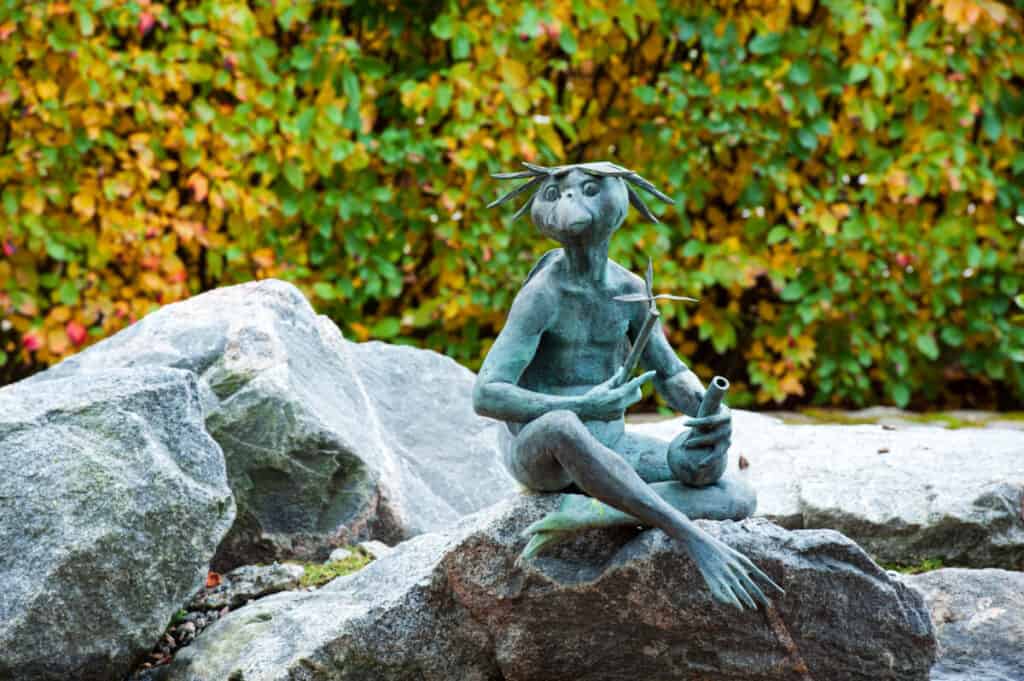
Thankfully, kappas have a significant weakness: they’re very polite!
Kappas have a dish on their head filled with water to keep them alive on land. If the water spills out, the kappa will become weak and retreat.
So if one ever threatens you, give the creature a respectful bow. They will feel obligated to bow back and spill their water.
2. Tengu
With their red face, fierce expression, and long nose, the appearance of a tengu is iconic. And you’d likely recognize tengu masks as they’re prominent in Japanese aesthetics and festivals.
Like kappa, these beings are a type of yōkai. They can shapeshift but often appear as a mix of human, monkey, and bird-like features.
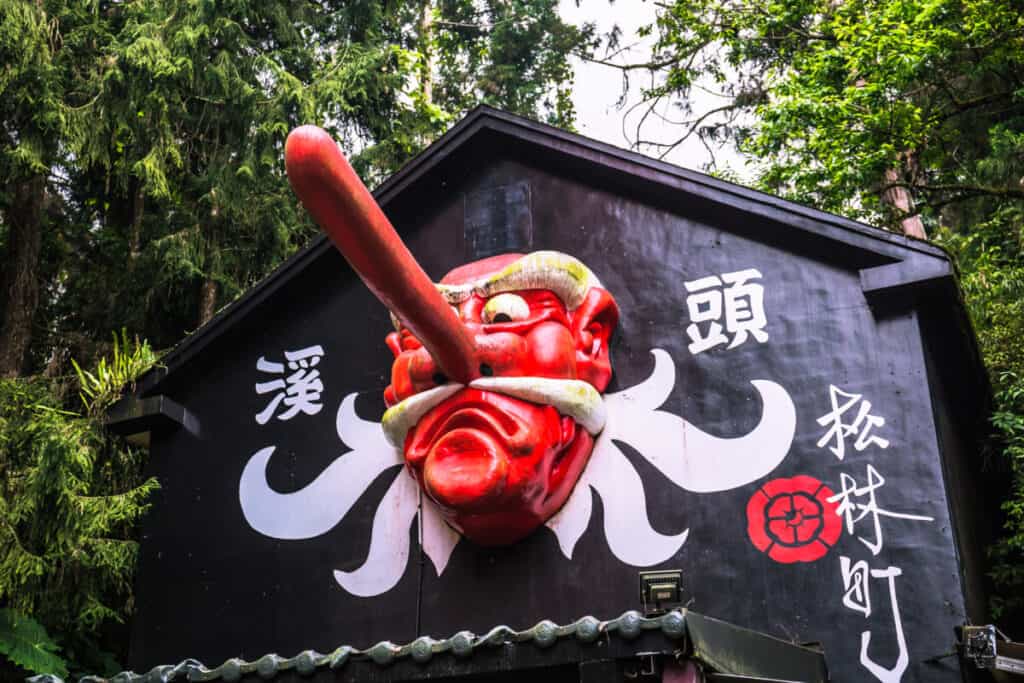
In the past, many viewed tengu as evil spirits opposed to Buddhism. But in recent years, their reputation has improved. Most now think of them as protective, if sometimes mischievous, creatures.
Foresters and fishers may make offerings to a tengu when entering a forest or mountain range. In return, the tengu protects them from evil yōkai and misfortune.
Despite their frightening appearance and powers, tengu isn’t known for being dangerous. In fact, most legends and myths depict them as comically naive and easy to fool.
3. Ryū (Dragon)
Ryū, or Japanese dragons, are among the mightiest creatures in the island nation’s folklore. Most ryū appear serpentine and scaly, flying without wings and sporting clawed feet.
Legends also describe them as elegant and powerful. They glide effortlessly through the sky with grace and can bend nature to their whim.
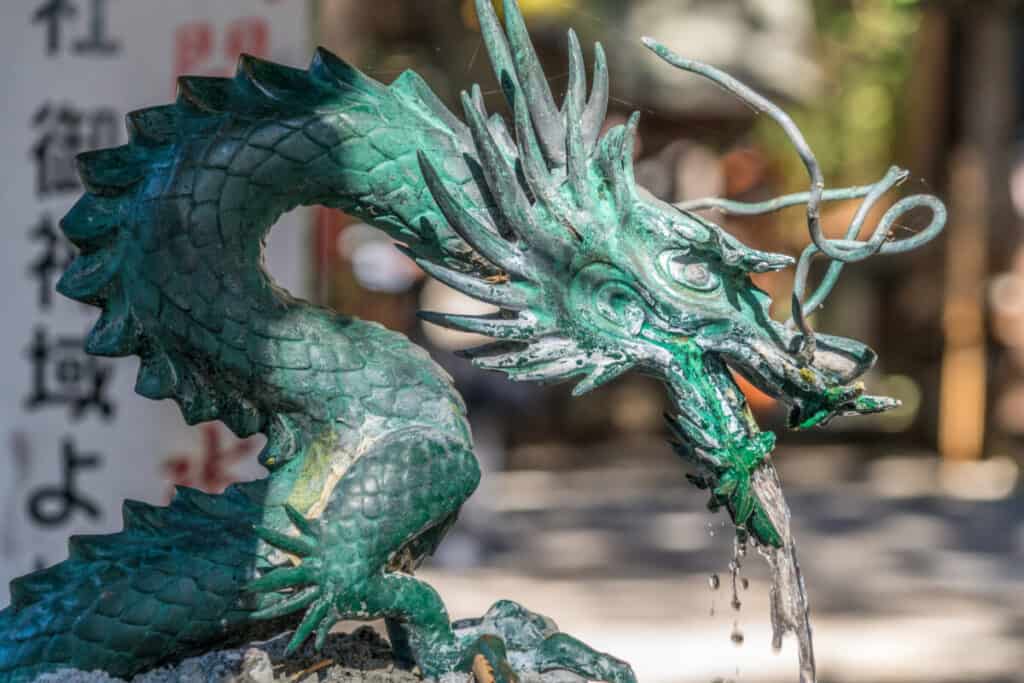
Japanese dragons are among the most prominent motifs in Japanese imagery. You can find them everywhere, from Buddhist temples to Yakuza tattoos. They’re most often associated with liberty, courage, and good fortune.
They also hold religious significance. Ryūjin shinkō, or “dragon god faith,” is a form of Shinto that worships the water dragon Ryūjin. Ryūjin is an ancient and wise ryū thought to control the ocean and rain.
As a result, practitioners thank him for Japan’s bountiful sea and good weather.
4. Nurikabe
Nurikabe is one of the strangest mythological creatures. Not just in Japan, but in the world.
Sometimes called “Mr. Wall,” this yōkai is essentially a massive invisible barrier. They prevent travelers from moving past a certain point, either protecting or misdirecting them.
Additionally, these spirits can make themself infinitely long and too tall to climb. So, there’s no way to get around them.
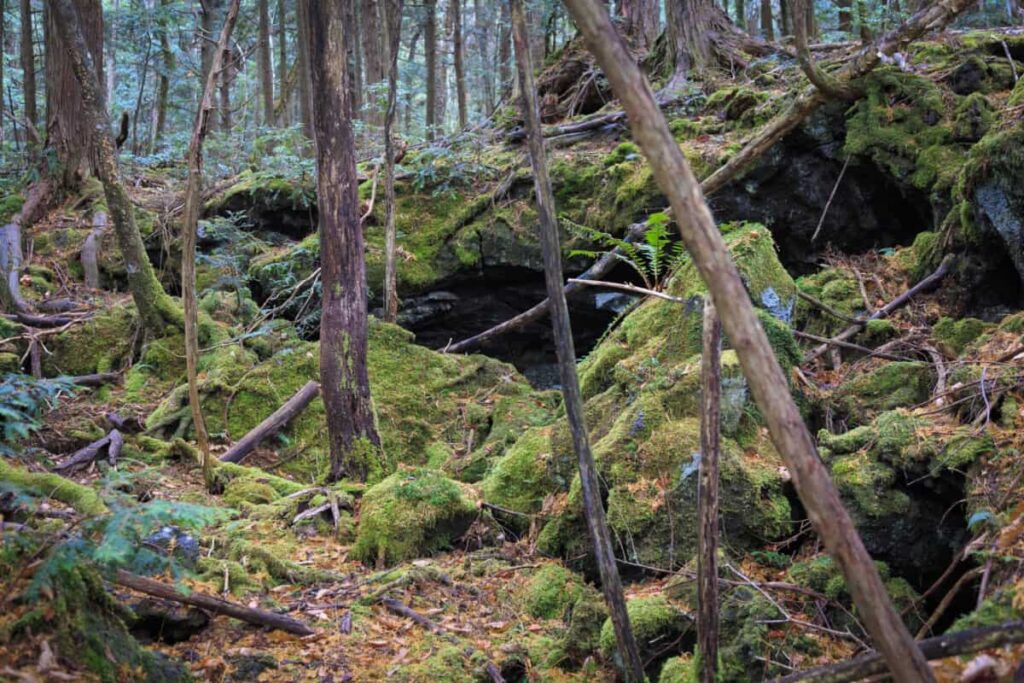
However, according to some legends, the nurikabe does have a secret weakness. If you press gently against the bottom left portion of the entity, it may open the path for you.
These quirky beings only emerge at night. They’re not benevolent but will rarely cause harm either. Nurikabe is also a common feature of Japanese fables and has appeared in popular anime and video games.
5. Onryo
Possibly the scariest entry on our list, onryo are malevolent ghosts out for blood. Meaning “vengeful spirit,” onryo come back to the word of the living to exact revenge.
While their motives are evil, onryo generally focus their wrath on a specific person or place. Such as a rival who wronged them or the site of their unjust death. Because of this, they’re often blamed for haunting creepy and eerie locations.
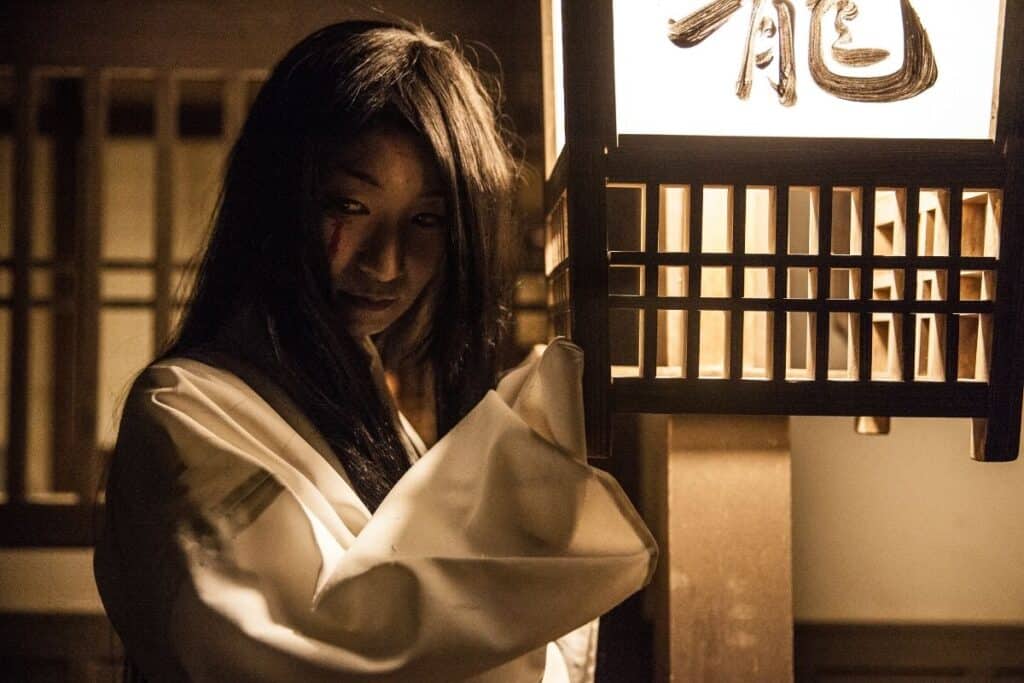
In terms of appearance, most onryo resemble human women. They usually wear a white funerary dress and have long, unkempt black hair.
Some depictions also show these monsters possessing ghostly white skin and long bloody nails.
An onryo doesn’t ordinarily kill their victims directly. Instead, they use disease and natural disasters to wreak havoc. Or torment enemies with supernatural happenings and nightmares.
6. Bake-danuki (Tanuki)
Based on the real-life tanuki, bake-danuki are quirky furred creatures loved for their goofy nature.
Like tanuki, bake-danuki are small and cute-looking animals. They resemble something close to a raccoon that can walk. And like raccoons, they have a long snout and furry tail.
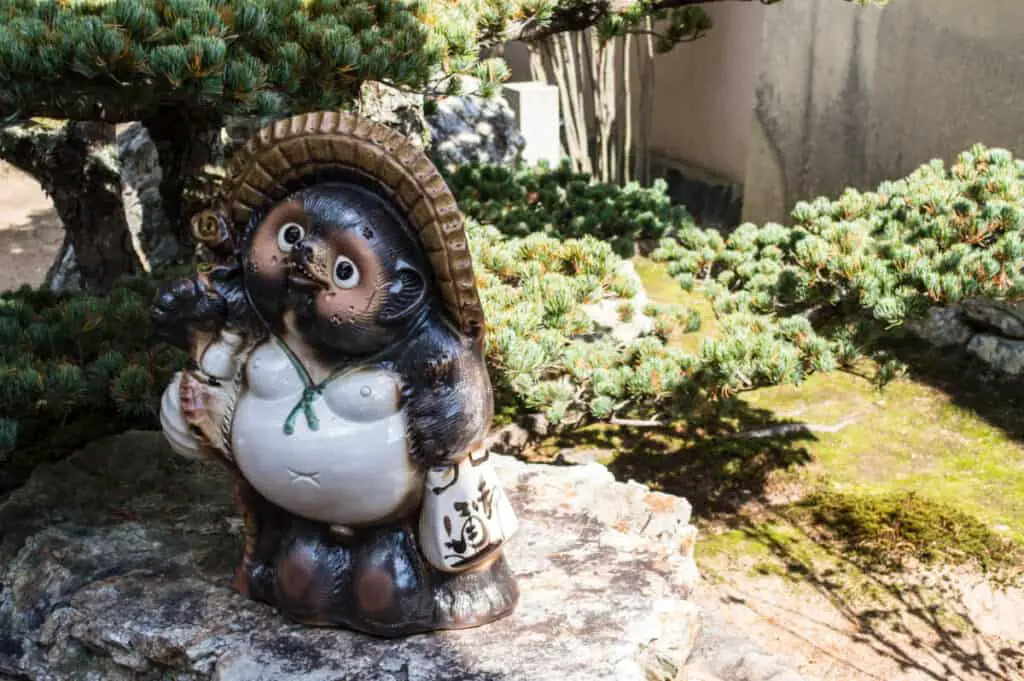
If you see bake-danuki or tanuki sculptures in Japan, you might notice something else odd; they usually have massive testicles. While somewhat biologically accurate for tanuki, the feature is often exaggerated for a comical effect.
While they can play tricks, most people see bake-danuki as playful and friendly. Statues of them are common in Japanese gardens, much like garden gnomes are in the West.
7. Shikigami
Shikigami are unique in that they don’t usually have any will of their own. Rather, magic-users can summon these creatures to do their bidding.
Typically, they’re asked to do covert tasks like stealing something or spying. Though, these spirits can also temporarily possess and control animals and objects.
Shikigami are naturally invisible. A person can only see them if the being reveals itself by turning into paper. As a result, most depictions of them are as paper clippings or living origami.
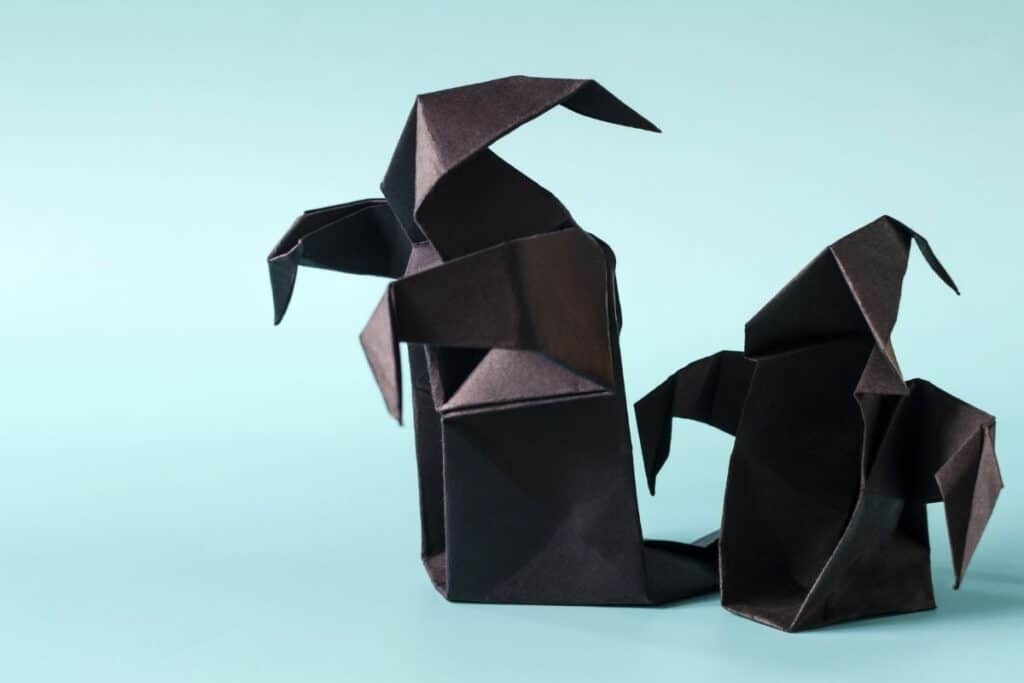
However, those who summon shikigami must be cautious. While these beings start out obedient, these spirits can develop their own will if their master behaves carelessly.
8. Nuppeppō
Nuppeppō are perhaps the ugliest and creepiest yōkai. These beasts are giant saggy blobs, sometimes with deformed faces lacking eyes and a mouth. They also often carry the scent of rotting meat, revolting anyone nearby.
These demons only come out at night around abandoned temples and deserted streets. They’re typically solitary and avoid getting too close to others.
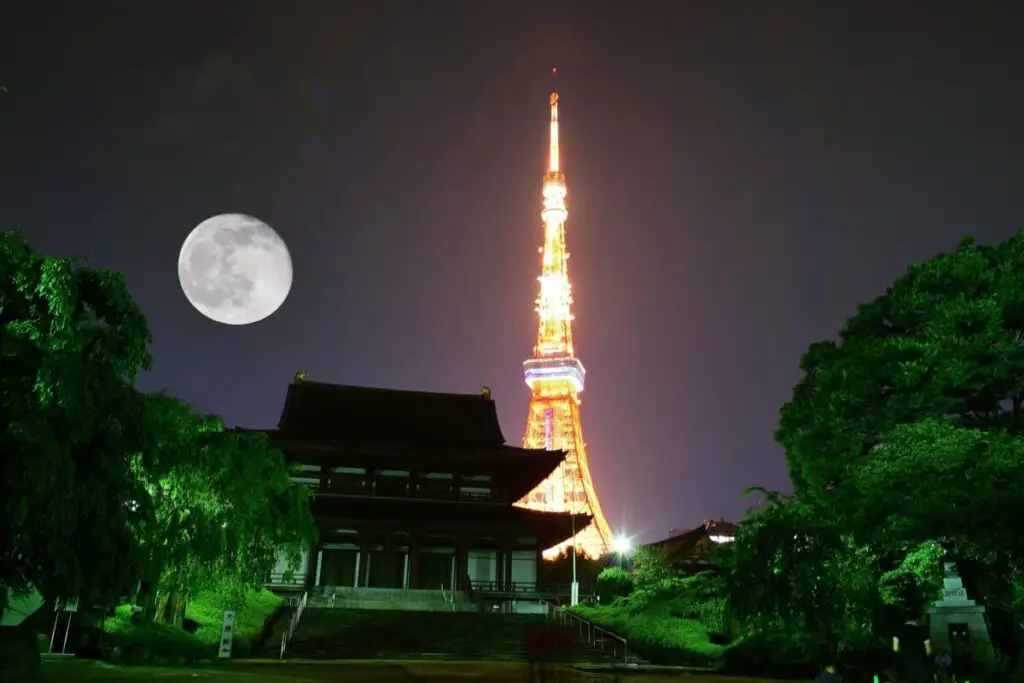
Disgusting as they appear, a nuppeppō won’t hurt anyone. However, they can use their stench and appearance to frighten passersby or cause chaos.
Interestingly, some legends say catching one and consuming their flesh grants eternal youth.
9. Jorōgumo
Jorōgumo is a spider-like goblins that seek to terrorize and consume young men. They usually accomplish this goal by transforming into astonishingly beautiful women.
When a golden orb weaver spider turns 400 years old, they turn into a jorōgumo. From this point on, they feel a need to hunt human prey.
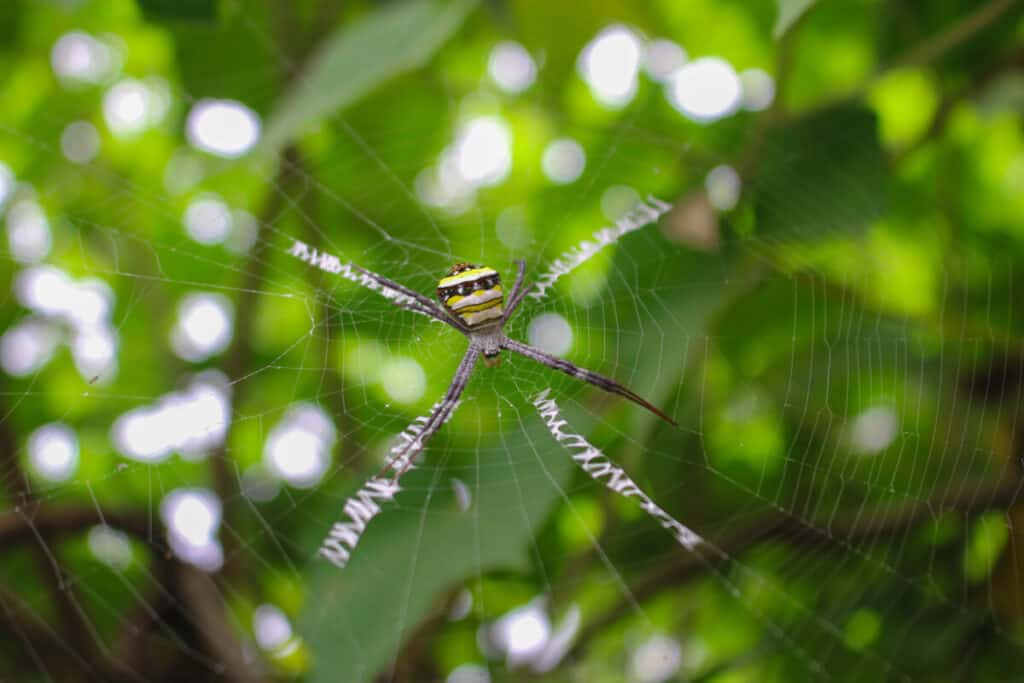
Often, they’ll lure men away by tempting their sensual desires. Once alone, this yōkai reveals their natural form and traps their victims in giant webs.
Like normal spiders, jorōgumo can make their homes almost anywhere. Some myths say that they live in cities all over Japan disguised as beautiful women, killing victims for years.
10. Kitsune
Kitsune (Japanese for “fox”) look much like wild foxes from anywhere else in the world. However, these Japanese foxes have supernatural powers and remarkable intelligence.
A kitsune’s power grows as they age, causing them to develop extra tails. Nine-tailed foxes are especially prominent in Japanese media, including popular anime like Pokémon and Naruto.
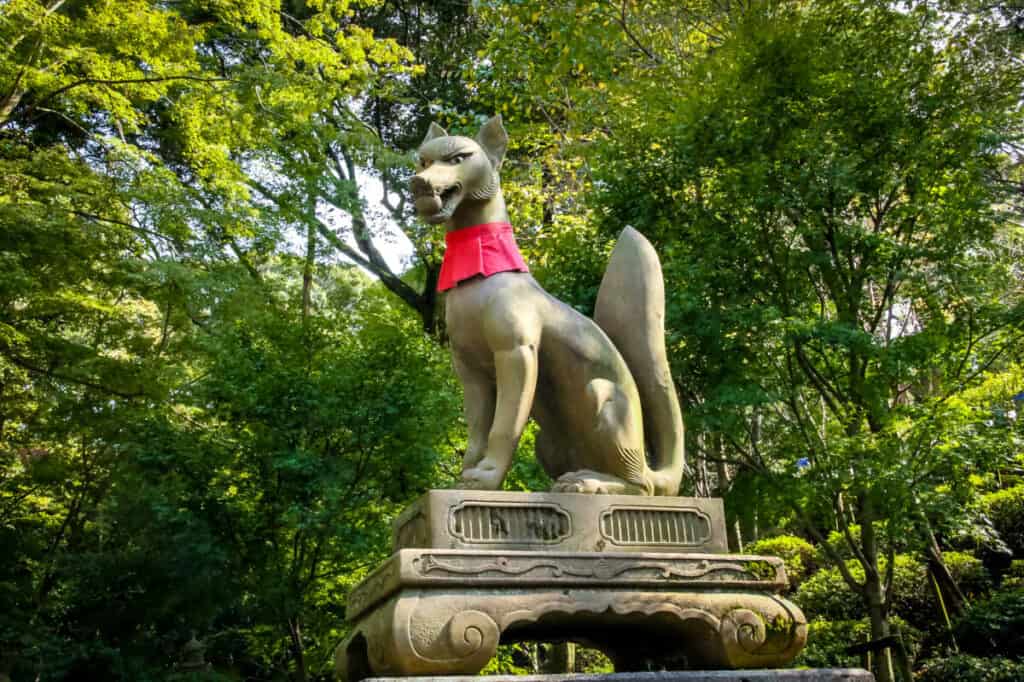
While they’re known for being mischievous, kitsune are ordinarily good-natured. They keep promises and can form deep bonds with humans.
In fact, many myths feature kitsune shapeshifting into humans and living peacefully among them. Though, they can make the mistake of snarling or showing their tail while intoxicated on sake.










